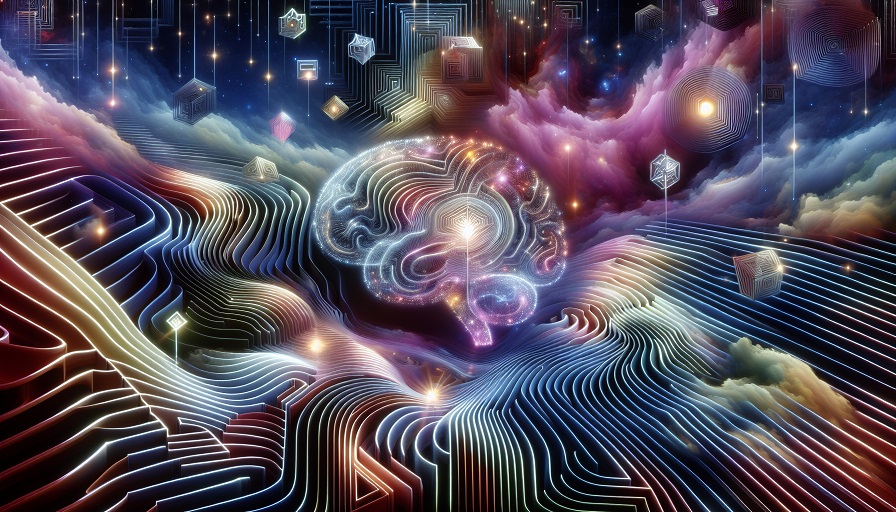
Yes, visual clutter can drain your brain’s processing power by overwhelming your attentional system, reducing working memory efficiency, and increasing cognitive fatigue – even if you’re not consciously aware of it.
Contents
- The Brain Wasn’t Built for Cluttered Environments
- How Clutter Competes for Attention
- The Neuroscience of Visual Overload
- Impact on Working Memory and Task Switching
- Clutter, Stress, and Decision Paralysis
- Does Digital Clutter Count?
- Strategies to Reduce Visual Clutter’s Cognitive Impact
- When Clutter May Be Neutral or Even Helpful
The Brain Wasn’t Built for Cluttered Environments
Throughout most of human history, the brain evolved in relatively simple environments – dense with natural patterns, but not chaotic with information. Today, we navigate homes, offices, and screens packed with competing colors, shapes, text, and objects. This creates a constant demand for selective attention, forcing your brain to work harder just to focus on what’s relevant. That extra cognitive load depletes mental energy faster than you might realize.
How Clutter Competes for Attention
Your visual system is wired to detect contrast, novelty, and motion. When a space is filled with too many unrelated elements – such as open files, disorganized shelves, or overlapping digital windows – each object becomes a potential signal. This triggers constant micro-decisions: “Is this relevant? Should I ignore this?” Over time, this stream of irrelevant stimuli competes with your primary task and erodes mental clarity.
The Neuroscience of Visual Overload
Visual clutter activates regions of the brain involved in filtering and prioritizing information, such as the dorsolateral prefrontal cortex and parietal lobes. These areas are also responsible for working memory and executive control – meaning clutter doesn’t just distract you, it directly reduces the bandwidth your brain has for processing complex tasks. A 2011 study in the Journal of Neuroscience showed that cluttered environments increase the brain’s need for inhibitory control, which fatigues cognitive resources more quickly than minimal or organized surroundings.
Impact on Working Memory and Task Switching
Working memory is your brain’s short-term information buffer – the scratchpad you use for reasoning, reading comprehension, and decision-making. Visual clutter reduces working memory capacity by forcing it to track and suppress irrelevant stimuli. It also increases the cost of task switching: when you shift attention from one idea to another, your brain takes longer to reorient in a messy environment than in a clean one. Even if you don’t notice the delay, the cumulative drain adds up across your day.
Clutter, Stress, and Decision Paralysis
Messy environments can also elevate stress. A 2009 study from UCLA found that women living in cluttered homes had consistently higher cortisol levels throughout the day. Other research shows that visual noise increases decision fatigue – the mental exhaustion that comes from making too many small choices. Clutter forces the brain to allocate effort to unimportant details, leaving less capacity for meaningful thinking.
Does Digital Clutter Count?
Absolutely. Digital clutter – such as crowded desktops, endless browser tabs, and overlapping notifications – impacts cognition similarly to physical mess. The brain doesn’t differentiate between physical and digital visual noise. Multitasking between poorly organized digital windows increases task-switching costs and contributes to a sensation of scattered thinking. Minimizing on-screen clutter can improve focus just as much as tidying your physical workspace.
Strategies to Reduce Visual Clutter’s Cognitive Impact
- Use the “one surface, one purpose” rule: Assign specific functions to different workspaces (e.g., reading area, laptop zone).
- Declutter your digital space: Close unused tabs, mute notifications, and organize files into clear folders.
- Use neutral or minimalist visuals: Opt for soft colors and low-contrast elements to reduce background cognitive noise.
- Batch tasks: Group similar mental activities to reduce task switching in cluttered environments.
- Reset visual space between tasks: Take 60 seconds to clear your desk or screen before switching to a new task.
When Clutter May Be Neutral or Even Helpful
Not all clutter is universally harmful. For certain creative individuals – especially visual thinkers or artists – having access to a wide range of stimuli can promote associative thinking. However, even in these cases, clutter tends to help during idea generation, but hurt during idea refinement or execution. Knowing when to declutter (and when not to) is a key aspect of cognitive self-management.
Yes, visual clutter can significantly drain your brain’s processing power. It doesn’t just distract – it uses up the same cognitive systems you need for focus, memory, and executive thinking. Whether physical or digital, reducing clutter helps preserve mental clarity, reduce stress, and maintain attention over time. A clean visual environment won’t make you smarter, but it removes unnecessary burdens that make you slower, foggier, and more fatigued.

